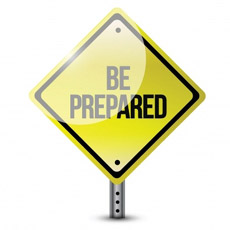The prospect of transferring all your belongings is oftentimes difficult to accept. Yet, you need to face it and be prepared because you cannot prevent it from happening. What you need are good tips to properly pack your items.
Do you know that you can save a lot of money by doing the packing yourself? Moving companies such as Ryder and Hertz will not charge you with packing services if you do it yourself. But you need the right technique on how to do it.
Your mover will not be responsible for anything that happens to your things if you pack them yourself. So, you need to be armed with the right knowledge so that you can ensure that your stuff will arrive at your final destination undamaged.
These tips are provided by people who have successfully transported their belongings unharmed.
1. Prepare Early
 This is the best advice you need to consider. Packing is very tedious and takes a long time. So if you can start early, the better you will be able to accomplish the thing. Starting early will also help you organize your packing activities.
This is the best advice you need to consider. Packing is very tedious and takes a long time. So if you can start early, the better you will be able to accomplish the thing. Starting early will also help you organize your packing activities.
You will be able to decide correctly which items go to a specific box, and which ones should go together in one box. This will also help you when it is time to unpack them in your new location.
If you delay doing this until your moving day is getting close, you might just stuff your things in whatever box that is not yet full.
2. Do It One at a Time
Organize your packing and don’t do everything at once. It would be better if you could do it room by room. Start packing the items in one room, and when it’s finished, do the other room. For instance, start packing things that belongs to the kitchen, before packing the things in the living room.
3. Stack Small Boxes in a Big Box
Naturally, it is easier to pack small items in small boxes. But if you have many boxes to attend to, it will be easy for small boxes to get lost. You can solve this problem by packing small boxes into a big box. It will be hard for you to lose that big box.
4. Trim Your Things
Before you start packing your things, get an overall view of what you need and what you can do without. This will show which things to keep and which things you can throw or give away.
A good measuring stick is: if you haven’t used an item for a year, it is best thrown or given away (if it’s still working). However, you can keep things with sentimental value, as long as they can’t really be replaced.
If you go through all your things at least twice, you will be able to really determine which ones to keep and which ones you can leave behind.
5. Pack the Essentials Together
It is frustrating to arrive at your new home and you need bath soap or a napkin but you can’t find it because you have packed it together with other things in a box that you can’t recall.
Remember the rule: Last on, first off. Make sure that the box containing the essentials is well-marked. It should be the last one to be loaded into the truck, so you can unload it first when you arrive at your new home.
It’s up to you to define what is essential to you and your family. Most often, these are soap, towels, napkins, drinking cups, coffee, eating utensils, pen and paper, and first-aid items.
6. Put Specific Labels on Each Box
To organize your packing now and unpacking later, label each box according to the room, or what’s inside the box. So, all things related to the kitchen go into the kitchen box, and all things related to the bedroom go inside the bedroom box, and so forth.
7. Inventory All Things Inside Each Box
Before putting anything inside each box, prepare a list so that you can inventory all the things that you will put inside all of the boxes. As the item goes into a certain box, put it down in the inventory of that box. Do that in every box that you are packing until you have packed all the items in your house that you need to transport.
8. Get Outside of the Box
Perhaps you may have several items that cannot be packed inside a box such as rakes, shovels, big garden and kitchen tools and so forth. You are not limited to using boxes for transport. You can use plastic bags that are strong and thick enough to hold them in place.
You can also use big plastic bags for your big stuff toys, and items that are irregular in shape and cannot be fitted inside a box.

